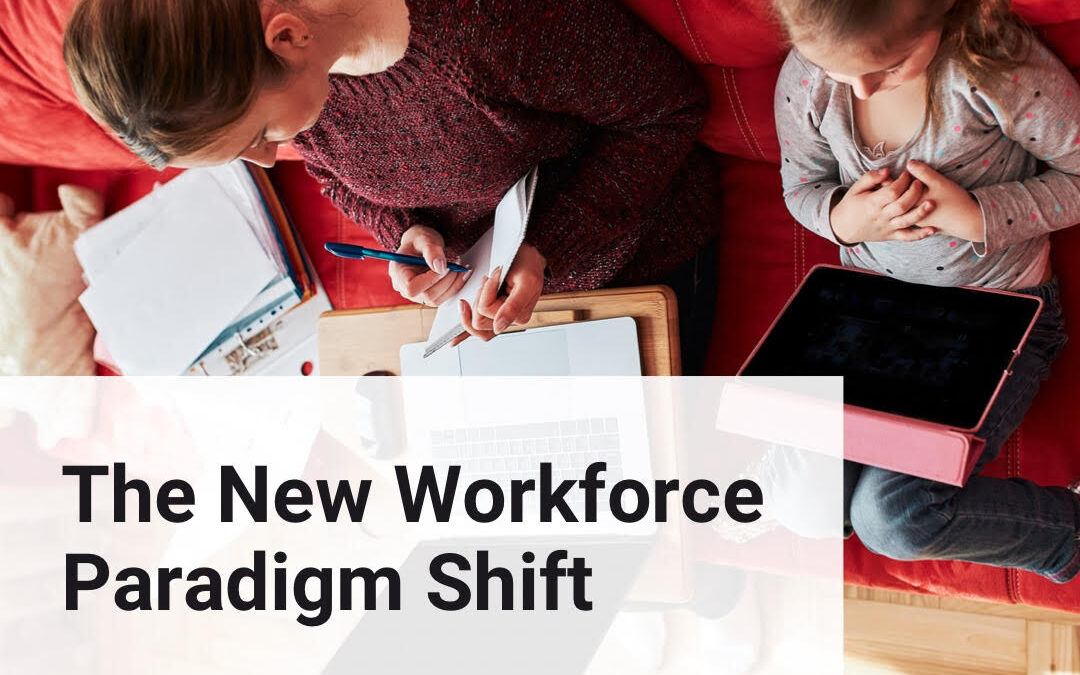The New Workforce Paradigm Shift
We are at it again, ladies. We are determining what is acceptable and not acceptable. Women are the trailblazers in the charge towards workplace paradigm shifts.
Since current times are difficult and can be challenging, we are not currently celebrating what we are in the process of transforming. Years from today, however, we will see how the workforce paradigm shift, led by women, created a massive workforce cultural shift. Women are no strangers to creating change. We have done this before: the suffragist movement leading to our right to vote, the abolitionist movement resulting in freeing slaves, the civil rights movement paving the way to laws against discrimination based on sex, and our push to have girls be able to participate in sports through Title IX.
Today, women are leading the Great Resignation, pushing a workforce paradigm shift and leaving the labor force in droves. This is no small news flash. Female workers held the majority of our nation’s jobs prior to the pandemic. The pandemic has definitely produced some challenges for all men, women, and children to face. These challenges include labor shortages, supply chain interruptions, decisions on vaccinations, and Covid-19 surges that come and recede. Amid all these changes, workforce changes have been enormous. There are also unprecedented psychosocial changes.
The COVID-19 lockdown has created a major change in how and where we work. These changes are forcing workers and employers to negotiate a balance between work and daily life in a manner that has not been previously necessary. The biggest and most obvious change is working remotely. Workers have had to change not only how they manage work responsibilities but when and how time is spent with family, and how to address things like childcare and daily tasks such as grocery shopping. Women workers have especially been punched. Women are more likely to work in face-to-face jobs like restaurants, retail, and healthcare. Women have also taken the brunt of childcare duties as schools struggle to reopen and childcare outside the home has been pricey and scarce.
Despite these challenges, working remotely and being at home has brought benefits, including spending more time with family, improved productivity, increased work and life satisfaction and increased control of one’s daily work. In psychological terms this has allowed for an “internal locus of control”. Meaning, workers, especially female workers, now feel more in control of their destiny. This internal locus of control has been part of women leading a workforce paradigm shift.
An internal locus of control encourages and enhances motivation and creates a space where assessing or re-assessing personal life and values is necessary. In being able to turn inward and believing in our ability to control our destiny, we have proudly called our humanness to come forth. Recognizing the irony that in turning inward, we expand ourselves.
The pandemic and all its consequences have allowed women to shift their concept of work and assess not only what is most meaningful in their lives but what is essential, that to which they are willing to devote energy to balance work-life. Many are refusing to allow technology to be a substitute for human connection, at home or at work. Employers will have to begin to allow this paradigm shift to be part of how they structure their workforce. Flexibility will be a key component. A major shift will be in encouraging an internal locus of control in their female workers rather than the employer determining what is of value to a worker.
Paradigm shifts, as we are living through now, are transformative. They are not typically neat, nor orderly. They are often radical, abrupt, and messy. They challenge long held beliefs. The current work structural shift will require humility as new ways of doing things are tried.
Employers and companies will have to be willing to actively participate in an organizational cultural change. Women are no strangers to creating, withstanding, and being triumphant in change. Employers have historically been much slower and reticent to embrace change. The savvy will understand that digital technology will not and should not be a substitute for human connection and that an internal locus of control in the female workforce is essential to this process. For employers and companies, understanding what their workforce values; actively valuing the worth of the “human” and “female” in their employees will guide the transformation. Our human connections, both to ourselves and to others, is a premium and one of our most human qualities.
Problem solving, excellent communication, and collaboration all rely on strong relationships. Where trust exists, a willingness to risk together ensues. For this transformation, companies and employers will need to risk the transformation side by side with their own workforce. This new paradigm shift understands that the workforce needs the cornerstone of “human” to be its foundation. This transformation, this paradigm shift, is not just calling us back to ourselves but also awakening the massive beauty of our human and female needs: to be in connection with ourselves, with others, and to drive our own destiny.
Blessings,
Dr. Spano

